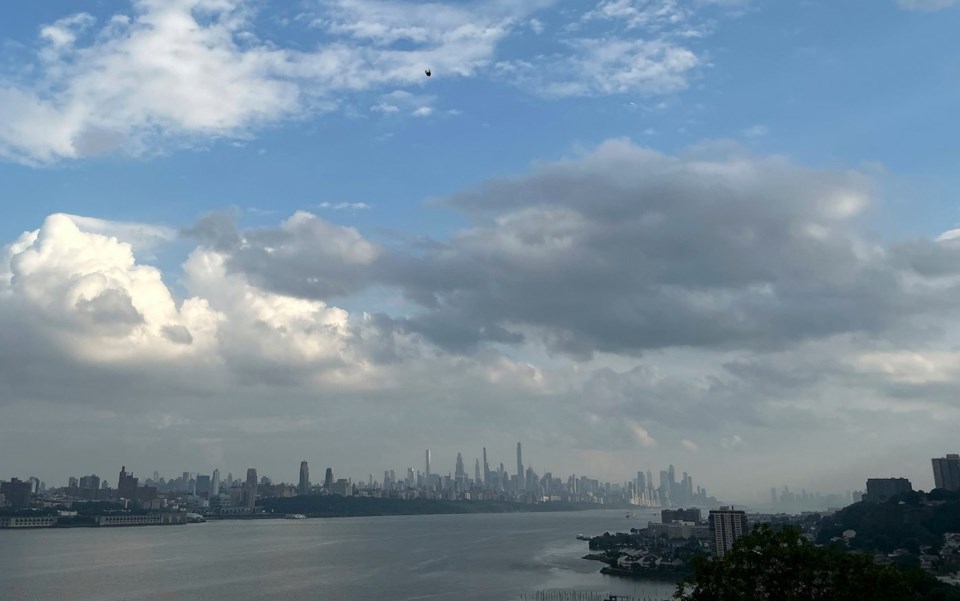A relatively mild, 3.0 magnitude earthquake shook the New York metropolitan area Saturday night. Here’s what to know.
What happened?
The earthquake hit in the New Jersey suburb of Hasbrouck Heights at about 10:18 p.m. Eastern time at a depth of about 6.2 miles (10 kilometers). It was felt fairly widely in northern parts of the state, southern New York and even in southern Connecticut.
There were no initial reports of serious injuries or significant damage in New Jersey or across the Hudson River in New York City. City officials said that as of late Sunday morning they had not been called to respond to any building-related issues. The Big Apple has more than 1 million buildings.
Many posts on social media reported the ground rumbling, and the U.S. Geological Survey reported more than 10,000 responses to its ‘Did You Feel It?’ website.
Though people in the United States might associate earthquakes more often with the West Coast, scientists say these types of incidents on the East Coast are not unlikely.
How frequent are earthquakes in the New York area?
The area feels an earthquake about once every couple of years.
“The northeast part of the United States does not see large earthquakes very often,” said Jessica Turner, a geophysicist with the National Earthquake Information Center, which is a part of the USGS.
Since 1950, only 43 other quakes of this magnitude and larger have occurred within 155 miles (250 kilometers) of Saturday’s event, according to the USGS.
A much larger, 4.8-magnitude quake that struck in Tewksbury, New Jersey, a little farther west of the city, in April 2024 was felt as far away as Boston and Baltimore. Some flights were diverted or delayed after that quake, and Amtrak slowed trains throughout the busy Northeast corridor.
A smaller, 1.7 magnitude earthquake that hit the Astoria section of Queens, New York, in January 2024 stirred residents.
The region sees a more damaging one only a couple times a century, if that. New York was damaged in 1737 and 1884 by earthquakes, according to USGS data.
How do East Coast earthquakes compare with West Coast ones?
The difference between East Coast and West Coast quakes lies in the “mechanism,” said seismologist Lucy Jones.
California is at the edge of the San Andreas fault system, which has two tectonic plates: the Pacific Ocean plate and the North American plate. Two plates move and push to build up stress, meaning earthquakes happen relatively frequently.
New York falls in the middle of a plate, far from the nearest boundaries in the center of the Atlantic Ocean and in the Caribbean Sea — resulting in residual stresses and making it difficult to predict where earthquakes will occur.
The area is also home to the well-known Ramapo Fault line. Geologists have not seen evidence that would suggest it has had a large earthquake in some time, but there have been smaller ones. Saturday's quake cannot necessarily be associated with this fault, experts say.
The same size earthquake is felt over a much larger area in New York than it would be in California.
“The rocks on the East Coast are particularly cold and hard and therefore, do a better job of transmitting the energy,” said Jones. In California, the various faults are more akin to a broken bell, which doesn't transmit energy as well.
Does this signal more to come?
Every earthquake makes another one more likely, but within a range, scientists say.
“At just 3.0, the chances are there will not be another felt event,” Jones said, estimating about a 50-50 chance there will be no activity that can be recorded. “Most likely is an unfelt, magnitude 1 or 2 aftershock.”
___
Associated Press writers Julie Walker in New York City and Michael Hill in Altamont, New York, contributed.
Alexa St. John, The Associated Press



